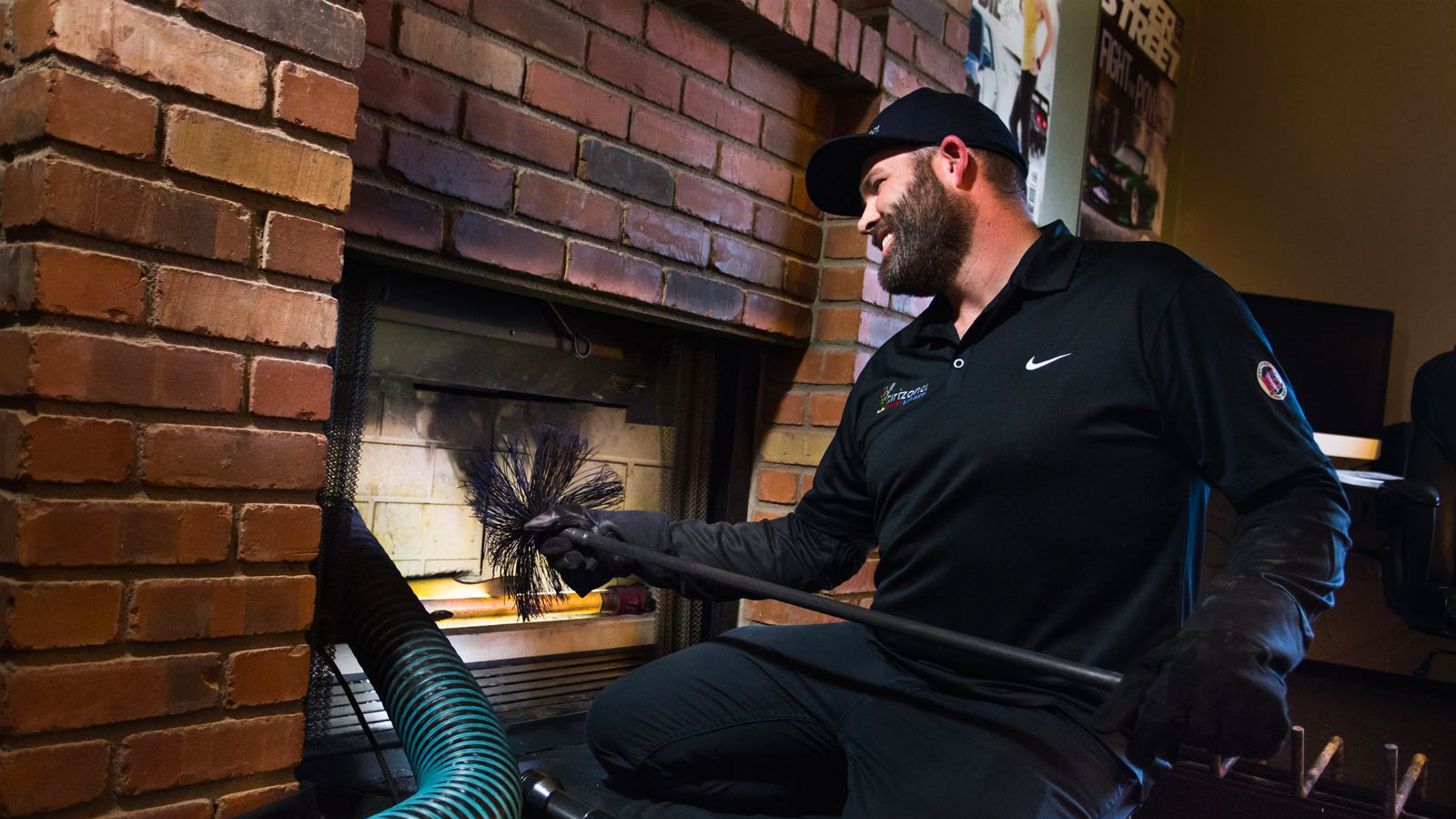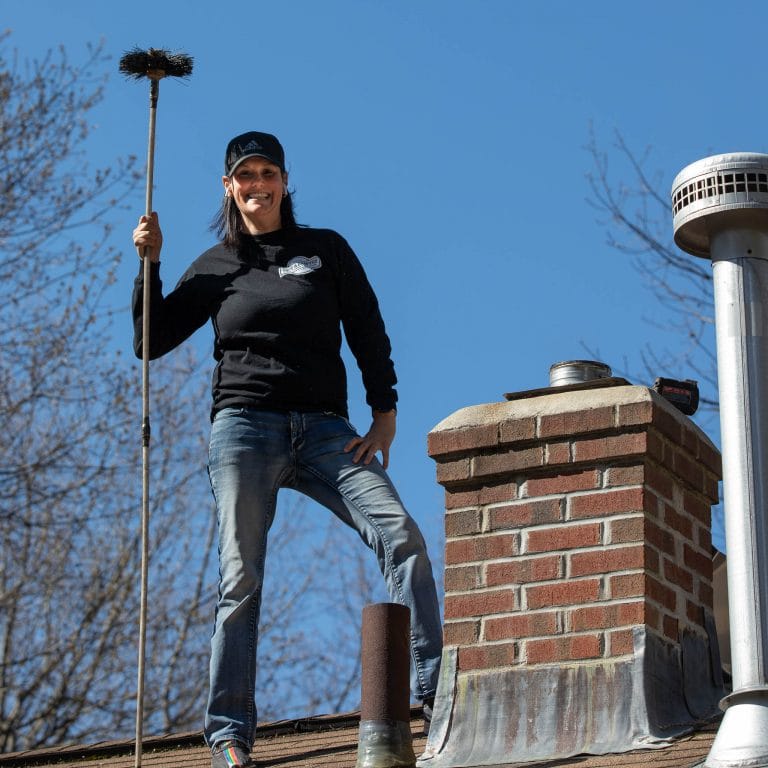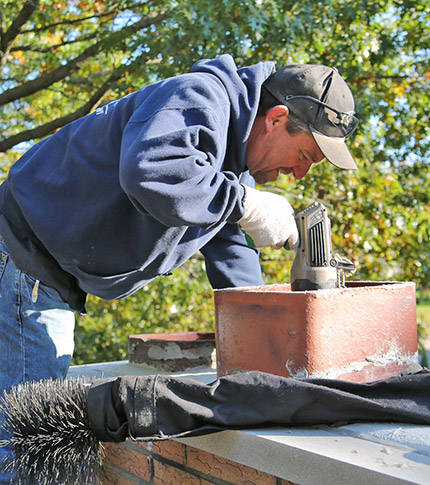Chimney Clean San Jose Excellence: Making Certain a Tidy and Reliable Fire Place
Chimney Clean San Jose Excellence: Making Certain a Tidy and Reliable Fire Place
Blog Article
Smokeshaft Cleansing: A Step-by-Step Guide to Preserving a Healthy Fireplace
Normal chimney cleaning is an essential component of this upkeep routine. By adhering to these standards, you will learn just how to gather the essential tools, perform an aesthetic assessment, clear debris and accumulation, sweep the smokeshaft, and finish the final actions for ongoing upkeep.
Gathering the Essential Devices
To start the procedure of chimney cleansing, the initial step is to collect all the necessary tools. Having the right devices at hand guarantees a safe and efficient cleaning procedure. The vital tools for chimney cleaning consist of a smokeshaft brush, a ladder, drop cloths or plastic sheets, a flashlight, gloves, and a dust mask.
The smokeshaft brush is the primary tool used to get rid of residue and creosote accumulation from the flue. It is necessary to choose a brush that matches the shapes and size of your chimney. In addition, a tough ladder is necessary to access the chimney safely. Make certain the ladder is steady and positioned on a flat surface.
Ground cloth or plastic sheets are essential for securing the bordering location from dirt and debris. They aid make and consist of the mess clean-up easier. A flashlight is important for inspecting the chimney's interior for any type of indications of damage or obstructions. Gloves are necessary to shield your hands from soot and other dangerous substances, while a dirt mask helps stop the breathing of particles.
Carrying Out an Aesthetic Evaluation

Using a flashlight, meticulously take a look at the interior walls of the smokeshaft for any signs of damages, such as fractures, loosened blocks, or mortar deterioration. These problems can jeopardize the smokeshaft's architectural integrity and pose a severe safety risk. Additionally, check for any type of indications of water damages, such as staining or efflorescence, as this can indicate a leaky chimney cap or flashing.
Next, evaluate the chimney flue for any blockages. Search for the visibility of nesting materials, leaves, or particles that may have gathered over time (Chimney Sweep San Jose). These obstructions can limit air movement, increase the risk of carbon monoxide build-up, and impede the smokeshaft's ability to efficiently vent smoke
During the visual inspection, pay close focus to the chimney crown, which is the top surface that shields the smokeshaft from dampness. Try to find fractures or missing out on pieces in the crown, as these can permit water to go into the smokeshaft and trigger substantial damages.
Clearing Up Particles and Accumulation
After finishing the aesthetic examination, the next step in chimney cleansing entails clearing particles and accumulation to make certain the correct functioning of the fireplace. Over time, particles such as fallen leaves, branches, and pet nests can collect in the chimney, obstructing the circulation of air and causing possible fire hazards.
To get rid of particles and build-up, it is important to use the right devices and techniques. A chimney brush, especially made for this purpose, is utilized to eliminate loosened particles and creosote from the chimney walls. It is vital to select a brush that matches the dimension of your smokeshaft to ensure efficient cleansing. Before starting the cleaning procedure, see to it to cover the fire place available to protect against particles from dropping into the room.
To start, place the brush right into the chimney and move it up and down, scrubbing the wall surfaces to displace any kind of debris or creosote. As soon as the cleaning is total, utilize a vacuum cleaner or a chimney brush expansion to remove the dislodged debris from the fireplace.

Brushing Up the Smokeshaft
The sweeping of the chimney is a vital action investigate this site in preserving a healthy and balanced fire place. With time, residue, creosote, and various other debris can build up in the chimney, obstructing the flow of air and potentially causing a dangerous build-up of combustible products. Routine chimney sweeping not only makes certain correct moved here air flow however also prevents the threat of smokeshaft fires.
When it involves chimney sweeping, it is highly recommended to work with a specialist smokeshaft sweep. These experts have the knowledge and devices needed to safely and effectively get rid of the collected debris from your smokeshaft. They will commonly begin by covering the fireplace to stop any type of soot or debris from entering your home. Making use of specific brushes and vacuum tools, they will after that cleanse the chimney from leading to bottom, guaranteeing that all the build-up is completely removed.
It is necessary to keep in mind that the frequency of smokeshaft sweeping relies on numerous elements, such as the kind of gas used, the quantity of usage, and the sort of smokeshaft. As a general regulation of thumb, it is suggested to have your smokeshaft inspected and brushed up at the very least as soon as a year.
Final Steps and Upkeep
To make certain ongoing upkeep and optimal performance, it is vital to execute normal upkeep techniques and follow a detailed collection of final steps for your fireplace. After completing the chimney sweeping procedure, the initial step in the final maintenance is to check the smokeshaft cap and stimulate arrestor. These parts prevent debris, animals, and rain from entering the chimney. Look for any type of indicators of damage or blockage, and clean or repair them if needed.

Examine the inside of the fire place for any kind of indicators of degeneration, such as splits, loosened blocks, or harmed mortar. These issues can affect the structural stability and safety and security of the fire place. Consult a professional chimney sweep or mason to address them immediately. if any kind of troubles are identified.
Ultimately, take into consideration mounting useful reference carbon monoxide gas detectors near the fire place and throughout your home. These gadgets can find the existence of this hazardous gas, supplying an early warning system in case of a chimney malfunction. Frequently inspect and replace the batteries in these detectors to ensure their performance.
Verdict
In final thought, adhering to a detailed overview for smokeshaft cleansing is vital in preserving a healthy fire place. By collecting the needed devices, carrying out an aesthetic assessment, removing particles and build-up, and sweeping the chimney, property owners can guarantee the safety and security and efficiency of their fire place. Normal upkeep and cleaning will help protect against chimney fires and boost air quality in the home. It is necessary to prioritize smokeshaft cleansing as a part of total home upkeep.
The important devices for chimney cleansing consist of a chimney brush, a ladder, decrease cloths or plastic sheets, a flashlight, handwear covers, and a dust mask.
A smokeshaft brush, specifically made for this function, is used to remove loosened debris and creosote from the smokeshaft walls. Routine chimney sweeping not only guarantees correct ventilation yet also protects against the danger of smokeshaft fires.
When it comes to smokeshaft sweeping, it is very recommended to employ a specialist chimney move. After completing the chimney sweeping procedure, the very first action in the final upkeep is to inspect the chimney cap and trigger arrestor.
Report this page